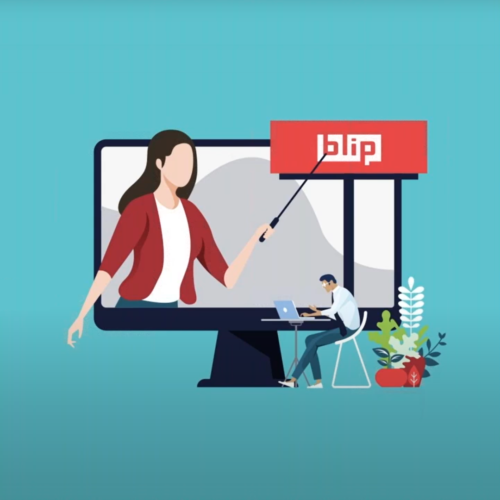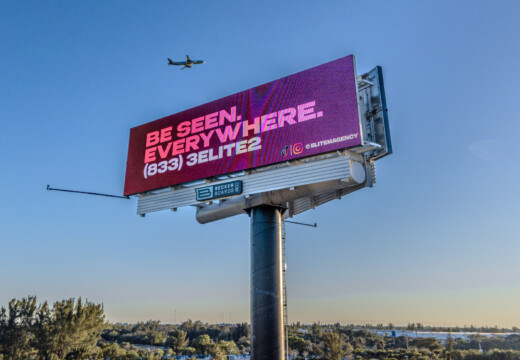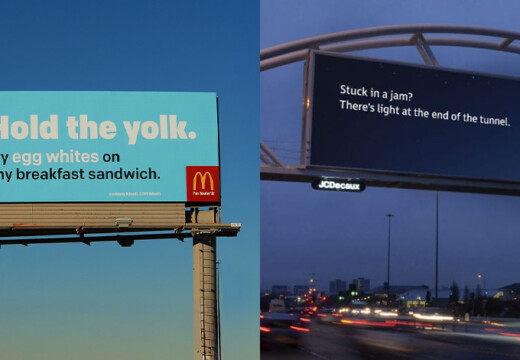
Webinar Recap: Google Analytics + Out-of-Home Attribution
Tracking the results of an offline medium like billboards can be tricky. Check out our webinar recap to learn how to use Google Analytics to help with your out-of-home advertising attribution.
To sum up a marketer’s main challenge, we can paraphrase an age-old industry quote: half of our advertising works – we just don’t know which half.
Marketers need to prove that their efforts lead to revenue. But doing so is often easier said than done, even with robust tools and tech – and that goes especially for out-of-home (OOH) campaigns.
How on earth can you trace eyeballs on digital billboards to clicks, purchases, and revenue generation?
Believe it or not, it’s simpler and more straightforward than you think. To help you figure out how effective your OOH advertising campaigns actually are, we put together a webinar session with an expert panel:
- Andy Rocker – Director of Customer Success & Support, Blip
- Cassidy Judd – Director of Transformation, Blip
- Andrew Campbell – Marketing Performance and Analytics Manager, Blip
- Lee Chang – Senior Finance Manager, Blip
Here’s a quick overview of what we discussed (for more information, keep reading):
- What “awareness” actually is and why it matters
- How to accurately gauge awareness
- Which advertising metrics matter the most
- Applying lessons learned to your business’s OOH marketing
On to the recap!
What “Awareness” Is and Why It Matters to Every Business
“Awareness” is a marketing buzzword that we all seem to think probably means something important…we’re just not sure what.
What does it mean to be “aware” of a business?
Per Cassidy, there are two parts: recognition and recall.
Recognition means a target customer sees your brand and it stands out in some way. Recognition is built on visual uniqueness: that what people see about you not only catches their eye, but is also different from other brands. Recognition represents familiarity, which builds trust.
Recall means that when your customer has a problem that you can solve, you come to mind. Sometimes this is conscious and deliberate – “My sink is broken, and I need a plumber. Who have I seen recently?” – but often it’s subconscious and automatic because of repeated (and memorable) exposure.
That’s where the rule of 7 comes in: Audiences need to see your message at least seven times before they take action or buy from you. As Cassidy pointed out, a multi-channel approach with methods that stack well with each other can deliver these repeated touchpoints.
Awareness, then, means that a customer recognizes your brand and recalls it voluntarily or involuntarily whenever presented with a stimulus or trigger that is relevant to what you do.
So, how does OOH advertising contribute to awareness? One study from IPA Databank took a look at OOH campaigns from 2004 to 2019. They found that customer loyalty was improved by 276%, including 80% uplift for online searches and 56% uplift for social media.
Another demonstration: Silicon Slopes is an annual conference held in Utah. Blip helped them run a digital billboard campaign, which generated over 137,000 Blips and 1.4 million impressions across 18 billboards. The result: they boosted their brand awareness and event attendance by 87% – and search interest by 300%.
Online searches and social media interactions following exposure to the campaign’s ads suggest both recognition and recall, since you can’t search for a brand that you don’t know exists or can’t remember anything about.
Metrics That Actually Matter: Using Analytics to Measure Success
Of course, planning for a marketing campaign to work and seeing proof that it’s working are two different things.
To start the search for evidence that OOH is working, it helps to start with two key questions:
- Are more people searching for my brand?
- Are more people visiting my website?
Andrew pointed out that consideration – whether or not people who are planning to buy something will buy from you – flows from awareness. When people are searching for your brand or visiting your website, then those customers are in the consideration stage.
The more people who are engaging in either of these activities, the more effective your awareness campaigns have become.
To get granular, businesses can use the powerful suite of tools that Google Analytics provides. One thing GA gives you is the means to measure direct, transactional impact. One example Lee provided was phone calls. By using a Google number attached to a campaign and displayed on billboards, a business can track direct impact in the form of customer calls that came from OOH advertising.
There are other forms of interaction that can provide clues as to how impactful your OOH advertising campaign is, such as:
- Clicks on your website or links/ads elsewhere online
- Clickthrough rate (CTR): the percentage of people who see a link/ad and click on it
- Impressions: the number of times people view your ad/link/brand (like in search or social media)
- Sessions: the times a customer is on your website and how long they stay
- New users: new visitors who haven’t been on your website before
By themselves, these metrics don’t paint the entire picture. But one benefit of OOH advertising is to enhance the effectiveness of other marketing activities – something we call lift. If you notice more clicks, or a higher CTR, or a larger influx of new users following the start of a campaign, then you’ll notice lift that’s likely coming from your OOH efforts.
But you can go deeper with location-based data, which tracks user activity based on geography. Billboards are highly localized. By tracking the amount of activity in the metrics above from specific geographical locations that contain the billboards your ads are running on, you can drill down even more to the effectiveness of your campaign (especially sessions and new users).
Finally, you can see how billboards impact what we call branded search, or when a user searches directly for a brand name or part of a brand name.
(This also extends to campaign-specific slogans, taglines, and hashtags.)
If your awareness campaign is working well, you should see an increase in branded search and even track your share of voice (how often your brand is searched for versus other competing brands).
By using Google Analytics, you can see how OOH and digital can and do work together for better marketing, even though one happens online and the other happens in the “real” world.
Applying Lessons to Your Business’s Marketing Campaign
One lesson the panel wanted to emphasize was the importance of a multi-layered, multi-channel marketing strategy.
Billboards can’t be run in a vacuum; they’re not a standalone marketing strategy, per Andy and Cassidy. It’s important to target your audience across all stages of the marketing funnel, and use multiple methods to pour new potential customers into the top of the funnel.
The panel gave a rundown of key points any business’s billboard investment strategy should follow:
- Apply spend on a regular basis across all your channels
- Don’t “pull levers” – consistency and commitment are key
- Marketing is a long-term game; campaigns have to have time to do their job
- Messaging continuity is crucial; touchpoints are stronger when they reinforce the same key brand messages
- Your campaign should be roughly 10-15% of your annual marketing budget to deliver an impact
How can you incorporate these lessons with Blip’s help?
- Plan ahead with our team and map out your entire campaign well in advance
- Work with Blip Customer Success (their job is to make your job easier!)
- Don’t get discouraged or distracted
- Use Google Analytics Blip Integration (GABI) to connect campaign blips to Google Analytics sessions and other user activity
_____
We’re big believers in OOH campaigns and analytics – and how they go hand in hand. With the right tools and right mindset, you can create eye-catching billboard campaigns that not only get attention, but translate it into action.
You don’t have to guess any longer about how well your billboard campaigns are working; now, you’ll know.


